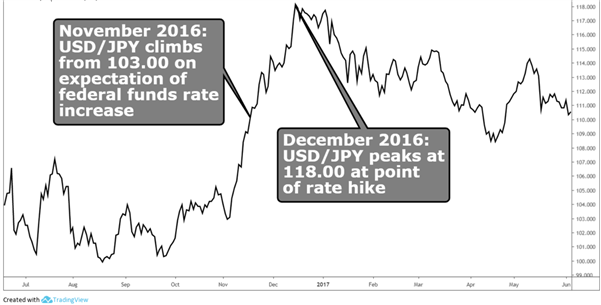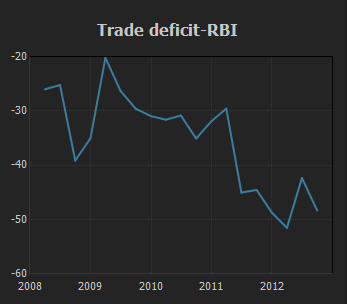what is the geometric mean of 4 and 9: How to Find the Geometric Mean Calculator & Formula
Contents:

If the geometric mean replaces each observation in the given data set, then the product of observations does nor change. Geometric Mean is the value or mean of a set of data points which is calculated by raising the product of the points to the reciprocal of the number of the data points. A very good app for finding out the answers of mathematical equations and also a very good app to learn about steps to solve mathematical equations. While most values tend to be low, the arithmetic mean is often pulled upward by high values or outliers in a positively skewed dataset.

This is calculated by multiplying all the numbers , and taking the nth root of the total. For example, the geometric mean is the only correct mean when averaging normalized results, which are any results that are presented as ratios to a reference value or values. If you are dealing with such tasks, a geometric mean calculator like ours should be most helpful.
Our online calculators, converters, randomizers, and content are provided “as is”, free of charge, and without any warranty or guarantee. Each tool is carefully developed and rigorously tested, and our content is well-sourced, but despite our best effort it is possible they contain errors. We are not to be held responsible for any resulting damages from proper or improper use of the service. But the two different means, arithmetic and geometric, are approximately equal because both numbers are sufficiently close to each other (a difference of less than 2%).
Common factor
For example, the geometric mean of 2 and 3 is 2.45, while their arithmetic mean is 2.5. The geometric mean of a data set is less than the data set’s arithmetic mean unless all members of the data set are equal, in which case the geometric and arithmetic means are equal. This allows the definition of the arithmetic-geometric mean, an intersection of the two which always lies in between.

Check out our website for a wide variety of solutions to fit your needs. To solve a math equation, you must first understand what each term in the equation represents. Looking for the approximate derivation of a squaring circle problem, you’ll also find the geometric mean formula essential. Learn how to calculate a geometric mean with the help of examples. Also, learn the difference between geometric and arithmetic mean. Levels of Measurement | Nominal, Ordinal, Interval and Ratio Levels of measurement tell you how precisely variables are recorded.
For the what is the geometric mean of 4 and 9 of the geometric mean it is irrelevant and may be ignored. The geometric mean will be displayed above together with links to calculate other measures using the same set of data. Geometric means are used in different fields like in finance, social sciences geometry and in mathematics. InFinance, when you want to evaluate an offer for a deposit with the compound interest, or dealing with repayments, then you have to deal with geometric mean not arithmetic mean. In social sciences, when you need to say human population growth rate and it is expressed in the percentage, then geometric mean is helpful to answer. You can say that “the average growth rate of population of X city in Y years is Z”.
Example: Geometric mean of percentages
The geometric mean is usually always less than the arithmetic mean for any given dataset. When your dataset contains identical integers, an exception arises (e.g., all 5s). The geometric mean of n number of data values is the nth root of the product of all the data values. If each value in the data set is substituted by the G.M, then the product of the values remains unchanged. Yes sometimes it can not get you the answer your looking for, but most of the time the app is very helpful, solves all basic higher mathematical problems like evaluation of limits, integrals, derivatives.
The geometric mean is an average that multiplies all values and finds a root of the number. For a dataset with n numbers, you find the nth root of their product. Geometric meanis a type of average that indicates thecentral tendency of a set of numbers by using the product of their values. The geometric mean is defined as thenth rootof the product ofnnumbers.
In mathematics, the geometric mean is a mean or average, which indicates the central tendency or typical value of a set of numbers by using the product of their values . Simply speaking, if you are wondering how to find the geometric mean, just multiply your values and take a square root , cube root , fourth root , etc. Measures of central tendency help you find the middle, or the average, of a data set. To calculate the geometric mean of the given data set, follow the below example. The geometric mean of a non-empty data set of numbers is always at most their arithmetic mean. Equality is only obtained when all numbers in the data set are equal; otherwise, the geometric mean is smaller.
Thus, the geometric mean is also defined as the nth root of the product of n numbers. In the arithmetic mean, data values are added and then divided by the total number of values. But in geometric mean, the given data values are multiplied, and then you take the root with the radical index for the final product of data values. For example, if you have two data values, take the square root, or if you have three data values, then take the cube root, or else if you have four data values, then take the 4th root, and so on. With this geometric mean calculator, all calculations will be a pleasure! Just type the numbers of which you want to calculate the geometric mean, and the result will appear in no time.
The product of the values equals the geometric mean raised to the nth power. The geometric mean differs from the arithmetic average, or arithmetic mean, in how it is calculated because it takes into account the compounding that occurs from period to period. Because of this, investors usually consider the geometric mean a more accurate measure of returns than the arithmetic mean. In general, to find the geometric mean of two numbers, we take the square root, of the product of the two… The geometric mean is more accurate here because the arithmetic mean is skewed towards values that are higher than most of your dataset.
How to find a geometric mean? An example on how to use geometric mean calculator
However, before settling on using the geometric mean, you should consider if it is the right statistic to use to answer your particular question. In the image above the perimeter calculation corresponds to finding the arithmetic mean and the area calculation – to finding the geometric mean. The product of the geometric mean’s each side ratio will be equal to both sides. The geometric mean, to put it another way, is the nth root of the product of n values.

The nth root is being taken out of the numbers, where n is the total number of values. The products of the corresponding items of the G.M in the two series are equal to the product of their geometric mean. The ratio of the corresponding observations of the G.M in two series is equal to the ratio of their geometric means. In this lesson, let us discuss the definition, formula, properties, and applications of geometric mean and also the relation between AM, GM, and HM with solved examples in the end.
Geometric Mean is a type of mean or average that indicates the central tendency or typical value of a set of given numbers. Our geometric mean calculator handles this automatically, so there is no need to do the above transformations manually. You can also enter the numbers with %, like “2% 10% -10% 8%” and will deal with that as well (it simply strips the %). As you can see, the geometric mean is significantly more robust to outliers / extreme values. For example, replacing 30 with 100 would yield an arithmetic mean of 25.80, but a geometric mean of just 9.17, which is very desirable in certain situations.
Remember that you may https://1investing.in/ up to 30 numbers – extra boxes will appear as you go. If you’re wondering what a geometric mean is and you’re looking for a definition and formula of the geometric mean, then keep reading. The mean, median, mode, and range are the most essential measurements of central tendency. Among these, the data set’s mean provides an overall picture of the data. In mathematics, the geometric mean of a group of n numbers is found by taking the nth root of the product of the numbers. We can use this formula to calculate the geometric mean of a set of numbers.
Geometric means with zeros in the dataset
For example, to find the geometric mean of a set of two numbers , first multiply the two numbers to get a product of 256. Geometric mean of the two segments of a hypotenuse equals the altitude of a right triangle from its right angle. The data is skewed downwards, and has large positive outliers – geometric mean can take care of that, in contrast to the arithmetic average. You begin with 2 fruit flies, and every 12 days you measure the percentage increase in the population. In the second formula, the geometric mean is the product of all values raised to the power of the reciprocal of n. In the first formula, the geometric mean is the nth root of the product of all values.
Central Tendency | Understanding the Mean, Median & Mode Measures of central tendency help you find the middle, or average, of a data set. The geometric mean, often referred to as the geometric average, is a so-called specialized average and is defined as the n-th root of the product of n numbers of the same sign. If in an arithmetic mean we combine the numbers using the summation operation and then divide by their number, in a geometric mean we calculate the product of the numbers and then take its n-th root. Any time you have several factors contributing to a product, and you want to calculate the “average” of the factors, the answer is the geometric mean.
Geometric mean for negative numbers
The geometric mean is best for reporting average inflation, percentage change, and growth rates. Because these types of data are expressed as fractions, the geometric mean is more accurate for them than the arithmetic mean. The geometric mean, sometimes referred to as geometric average of a set of numerical values, like the arithmetic mean is a type of average, a measure of central tendency. The population or sample option selector is only used for calculating the variance or standard deviation.
Transcript : Vaxcyte, Inc., Q4 2022 Earnings Call, Feb 27, 2023 – Marketscreener.com
Transcript : Vaxcyte, Inc., Q4 2022 Earnings Call, Feb 27, 2023.
Posted: Mon, 27 Feb 2023 21:30:00 GMT [source]
Needs to review the security of your connection before proceeding. The reference angle calculator finds the corresponding angle in the first quadrant. If you have more numbers than two, keep typing the values into separate boxes. Only eight are shown, but you can enter up to 30 numbers – they’ll appear when the time comes. The mean is the sum of all values divided by the total number of values.
- Simply speaking, if you are wondering how to find the geometric mean, just multiply your values and take a square root , cube root , fourth root , etc.
- The products of the corresponding items of the G.M in the two series are equal to the product of their geometric mean.
- In the arithmetic mean, data values are added and then divided by the total number of values.
- If you’re wondering what a geometric mean is and you’re looking for a definition and formula of the geometric mean, then keep reading.
Geometric Mean is defined as the nth root of the product of the n units in a data set. To calculate the geometric mean enter values in the input box by using our Geometric mean calculator. In other cases, zeros mean non-responses and in some cases they can just be deleted before calculation.
The geometric mean is less than the arithmetic mean for any set of positive numbers but when all of a series’ values are equal, however, G.M. The geometric mean is the average value or mean that, by applying the root of the product of the values, displays the central tendency of a set of numbers or data. The arithmetic mean is defined as the ratio of the sum of given values to the total number of values. Whereas in geometric mean, we multiply the “n” number of values and then take the nth root of the product. The geometric mean is used in finance to find the average growth rates which are also known as the compounded annual growth rate . The arithmetic mean is more useful and accurate when it is used to calculate the average of a data set where numbers are not skewed and not dependent on each other.
